1
HOME > Grooming >
HOW TO TALK LIKE A MODERN DAY BARBER
A GUIDE TO BARBERSHOP JARGON
Written by Menswear Style in Grooming on the 9th January 2018
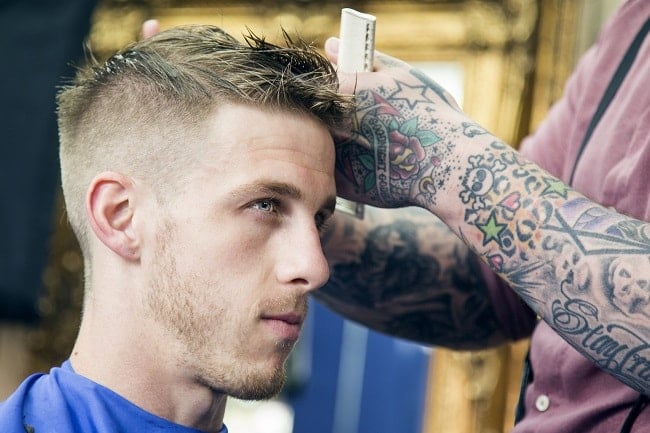
Ever sat in the barbershop and wondered what on earth the professionals are talking about? Jargon, in any industry, can be intimidating for those that are not in the know. And understanding a little more of the local lingo is never a bad thing. To give you the edge when it comes to your next haircut, premium men’s grooming brand The Bluebeards Revenge – with help from award-winning barbers Tom Chapman and Simon Bones – have helped us decode some of the most mind-boggling jargon that barbers and hairstylists use today.
Layered
Layers help to give your hair texture and create movement, especially in longer hair. They can also create volume and remove weight depending on their placement and the sectioning pattern used.
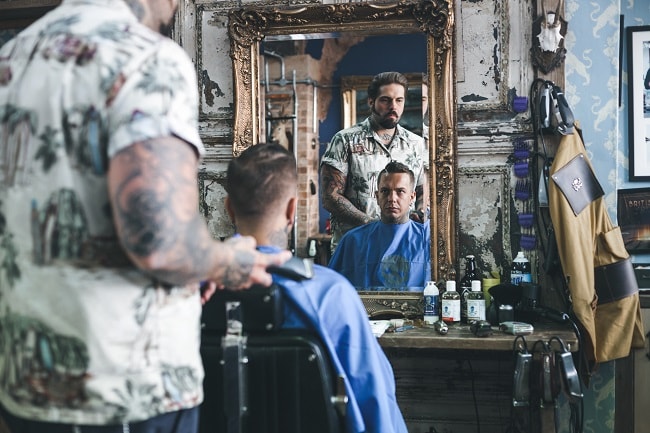
Razoring
Razoring makes the hair taper to a thinner peak and helps to create texture and softness. It’s often done using a feather razor and is only suitable for certain hair types, such as thin straight hair. Some hair types can react badly to razoring, so be wary. Razoring can be used to an extreme to create huge separations too, such as a hard parting.
Hard Parting
A shaved/razored section that sits in the parting line of the haircut.
Blunt cut
A blunt cut is done by cutting each strand of hair at the same length. This is also referred to as 'club cut' and is better suited to those with thinner hair.
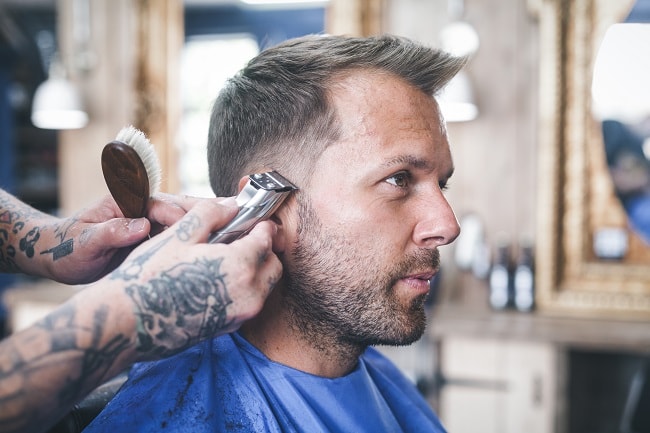
Toner
This is what gives you that silver/grey colour that is so on-trend for men right now. It’s a colour that’s applied to damp hair and left for around five minutes. Toners will cancel out the yellow tones that bleach alone often creates.
Channel cutting
The barber will glide their scissors along the scalp and cut through the hair without closing the scissor blades. This method of cutting the hair is done to achieve directional texture.
Slicing
This is often done through the top of men’s hair and requires a barber to comb the hair up and hold it in their fingers, low to the scalp. Then, with the scissors partially open, they run them through and up the hair, creating texture and separation. It’s best suited to thicker hair.
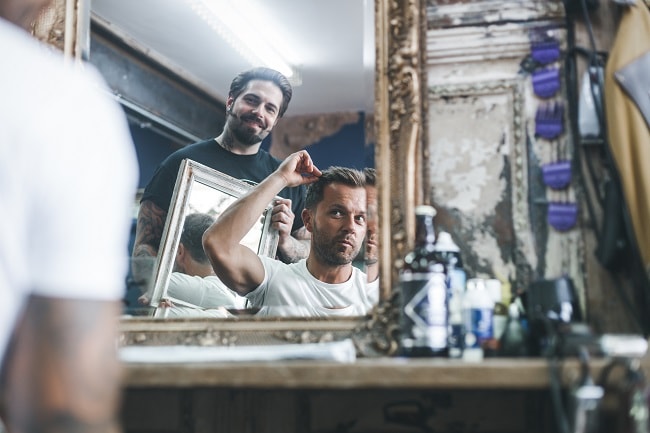
Graduation
Graduation is when the hair increases in length in a uniform manner the further up the head you go.
Taper
A traditional taper cut sees the length of the hair graduate from the top of the head, down to the sides and nape in a symmetrical fashion that leaves the natural hairline visible. The top of the head usually featuring hair that is between two and four inches long, while the sides and back feature clipper grades that gradually get shorter.
Zero taper
A taper that tapers out to zero at the bottom - no guard on the clippers.
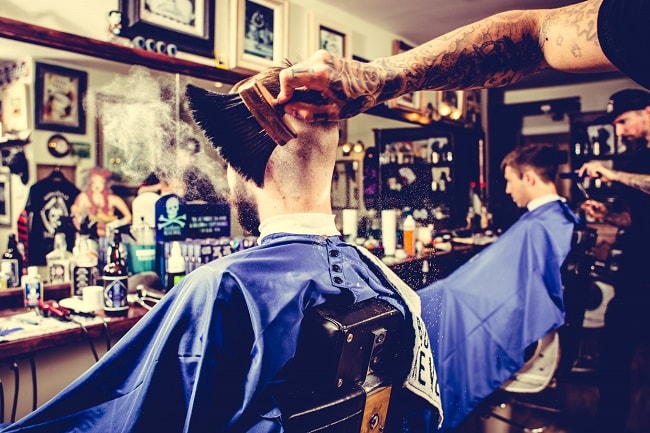
Fade
Like a taper cut, a fade graduates the hair from top to bottom. However, there are noticeable differences in how early the fade effect begins and where on the head it finishes. Unlike a taper, the fade effect finishes above the natural hairline; giving the appearance that your hair has blended into your skin. The hair on top of the head is often shorter than a taper too, usually less than two inches.
Skin fade
This is the same as the fade, except the shortest length has to be all the way down to the skin, which is often achieved with a razor.
Thinning
Hair thinning is used on men who have very dense, thick and/or heavy hair. It helps to remove the bulkiness and creates fine layers in the hair – similar to slicing.
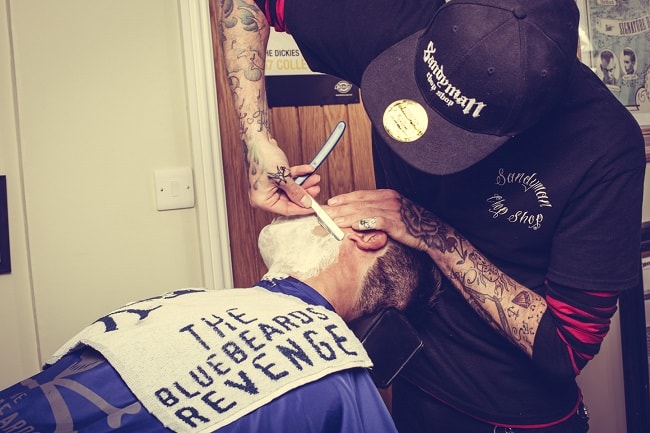
Choppy
This is a type of texture. If you ask for a choppy cut you are asking for short layers that have been point cut to create movement.
Point cutting
Point cutting is used to remove bulk from the hair’s ends, allowing layers or graduation built into the haircut to blend together more seamlessly. Ultimately, it creates movement. If your haircut isn’t sitting right, point cutting can be used to guide the hair into the right shape and style.
Pompadour
A style of hair cut where the fringe is swept back from the forehead, either straight back or in a side parting. This is a classic greased back haircut with volume through the front. Think Elvis Presley.
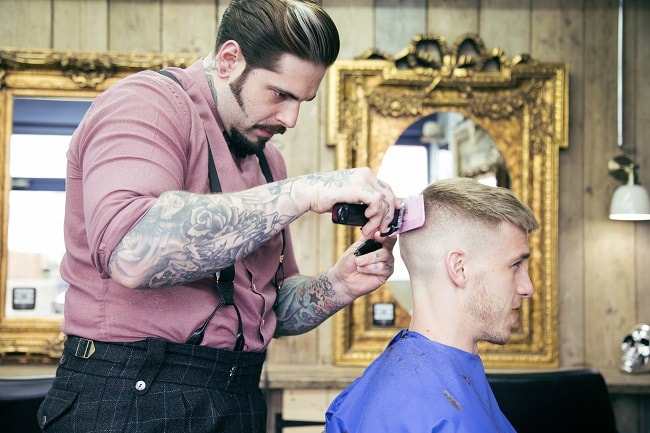
Quiff
Similar to the pompadour, but a lot looser and messier with a lot of texture and more of a matt look.
Slick back
Exactly what it says on the tin – the hair is pulled back tight to the head. Sometimes this style is disconnected and shaved all around the back and sides.
Disconnected
Any disconnected hairstyle will involve extreme changes in length. The complete disconnection is left long on the top and short on the sides. Whether the top is slicked back or pulled up for height, it’s a versatile and bold look. The difference between this and other layered haircuts is that, with a complete disconnection, there is no blending together of the various layers. This makes for an edgy and strong look.
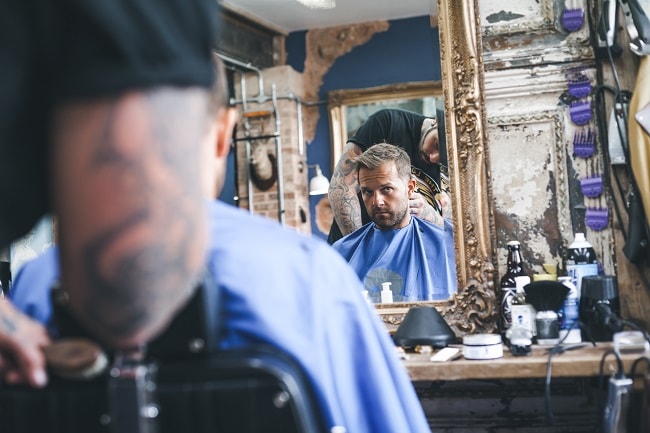
Crop
This is a short, textured, choppy look that has had many variations over the years. It’s often worn with a blunt fringe in current trends and is also known as a French crop.
Flat top
A traditional haircut where the hair is spiked up and the back and sides are usually kept very short. Traditional barbers will freehand the top but some people use a special comb with a spirit level on – yep, that’s a real thing!
Trending
2
3
4
5
6
7
8
9
10









